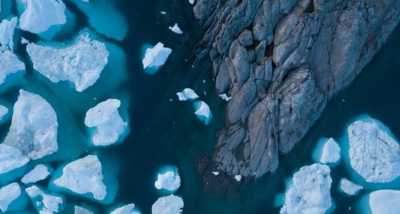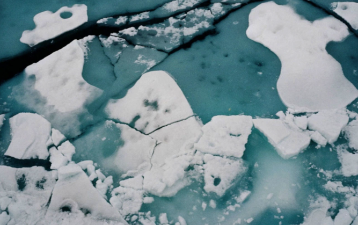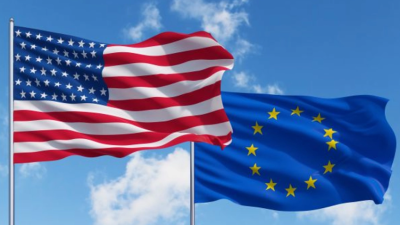Over the past few decades, the Arctic has warmed at a rate nearly two to three times the global average, with parts of Antarctica showing similar trends.
What causes such a pronounced "amplification" in the polar regions (particularly the Arctic, which is often used as an example in this article)?
Why is the Arctic warming so rapidly?
A large part of the explanation has to do with sea ice. This is a thin layer of ocean water (typically one to five meters thick) that freezes in winter and partially melts in summer.
Sea ice, covered in a layer of bright snow, reflects 85% of incoming solar radiation back into space. The opposite occurs in the open ocean. As the darkest natural surface on Earth, the ocean absorbs 90% of solar radiation.
When the Arctic Ocean is covered in sea ice, it acts like a vast reflective blanket, reducing the absorption of solar radiation. As sea ice melts, the absorption rate increases, creating a positive feedback loop in which the rapid rate of ocean warming further amplifies the sea ice melt, leading to even faster ocean warming.
This feedback loop largely contributes to the so-called Arctic amplification effect and explains why the Arctic is warming so much faster than the rest of the planet.
Is Arctic amplification underestimated?
Numerical climate models have been used to quantify the magnitude of Arctic amplification. They typically estimate an amplification factor of approximately 2.5, meaning that the Arctic is warming 2.5 times faster than the global average. Based on 43 years of surface temperature observations, the new study estimates the Arctic amplification factor to be approximately 4.
Climate models rarely obtain such high values. This suggests that these models may not fully capture the complete feedback loop leading to Arctic amplification and, therefore, may underestimate future Arctic warming and its potential consequences.
Impacts of the Polar Amplification Effect
The rapid warming of the polar regions, like a domino effect, has triggered a series of chain reactions with profound impacts on global ecology, climate, carbon cycles, and sea levels.
- Sea Level Rise
The polar regions contain numerous glaciers and ice caps. As temperatures rise, these glaciers and ice caps melt at an accelerated rate, releasing large amounts of freshwater into the oceans, increasing ocean volume and leading to sea level rise. This, combined with extreme weather events such as typhoons and storm surges, could inundate many coastal cities and lowland areas, threatening human survival and economic development.
- Increased Extreme Weather
The polar amplification effect alters the balance and stability of the global climate system, leading to an increase in extreme weather events.
Due to the polar amplification effect, the temperature difference between the polar regions and mid- and low-latitudes weakens, making it difficult to maintain a strong westerly jet stream. The cold air within the polar vortex becomes restless and prone to breaking off and moving southward, triggering extreme cold snaps during Northern Hemisphere winters (such as the 2021 severe cold snap in Texas, USA).
Concurrently, the reduction in sea ice will also affect ocean currents, such as the North Atlantic Current. Changes in these currents directly impact the European climate, potentially leading to wetter and stormier winters. The Asian monsoon system could also shift due to Arctic warming, affecting precipitation distribution and increasing the risk of floods and droughts.
- Ecosystem Disruption
On the one hand, the melting of polar permafrost will release large amounts of methane, further exacerbating global warming. On the other hand, the habitat of animals that rely on sea ice, such as polar bears and seals, will decrease, posing a threat to their survival.
- Other Impacts
For the Arctic, on the one hand, the melting of sea ice will potentially open up Arctic shipping routes, significantly shortening the distance from Northeast Asia to Europe and North America and facilitating the development and utilization of Arctic resources. On the other hand, the melting of sea ice and permafrost will increase the difficulty and cost of resource development, while also posing greater environmental risks.






